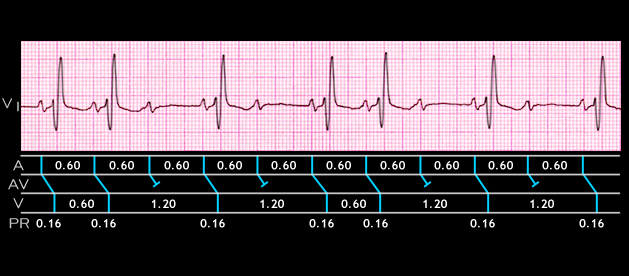
The examples in the preceding frames illustrated alternating type I 2nd degree 3:2 and 2:1 AV and SA block. The tracing shown here is an example of alternating type II 2nd degree 3:2 and 2:1 AV block. The PR intervals of the conducted P waves are constant (0.16 seconds), the pauses are of equal duration (1.20 seconds), and the pause durations are twice the PP (and RR ) interval of 0.60 seconds. These features are diagnostic of type II block and electrophysiologic testing confirmed that the site of block was distal to the AV node.
